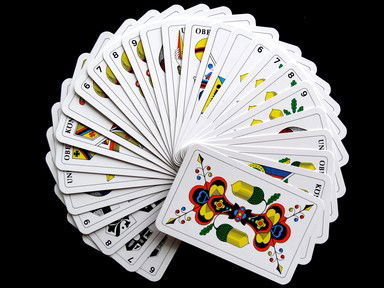
A Suitcase Full of Cards Trivia Quiz
Card Suits in Different Countries
As Europeans gained a taste for playing cards, different countries developed their own decks with their own suits. Your task is to match these various suits to the playing cards of their respective countries. (Some suits are in multiple decks.)
A classification quiz
by trident.
Estimated time: 3 mins.
- Home
- »
- Quizzes
- »
- Hobbies Trivia
- »
- Games & Toys
- »
- Card Games